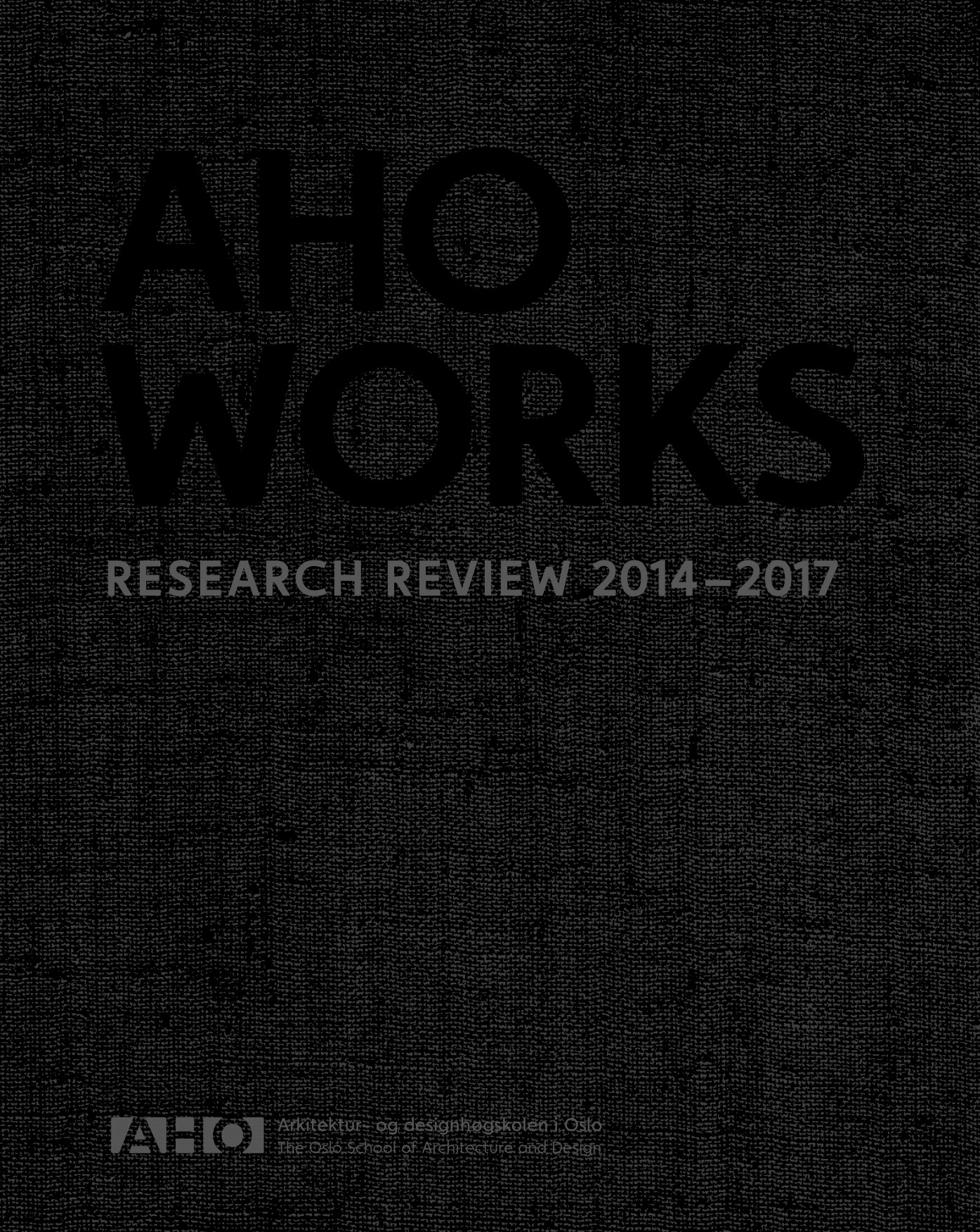- Type of project
- Basic research
- Funding
- AHO Board
- Website
- https://en.calameo.com/read/0065437314ee14d426fb5
- andrew.morrison@aho.no
- Duration
- 01.06.2016 -> 31.12.2017
This project has been completed
About the project
Commissioned by the AHO Board as a Review of Research, the Quality for Impact project aims to build knowledge about research at AHO and its relation to wider professional, educational, commercial and societal impact. The qualitative nature of the study will help develop situated knowledge about a diversity of approaches and insights in ‘design’ based inquiry.
Our QFI assessment of research at AHO has been informed nationally and internationally by experience in ongoing project evaluations, through consultation with leading experts and the Research Council of Norway. It has been designed as a collaborative and emergent process to help us better define our own research identities and practices, as well as to reflect on them critically as part of reshaping why, where how and when we work in relation to partners, participants and publics.
Click on the image to read the publication.
The main aims of this assessment are to:
- more fully describe and analyse the research practices, outputs and outreach of our ‘design’ centred university
- apply qualitative methods and design techniques to carry out assessments of quality for impact
- develop means to effectively and communicatively convey the nature, quality and reach of our research
- propose ways through which quality and impact might be conveyed outwards to wider research audiences and publics
- foster a qualitative mode of inquiry at the institution as a means of shared and mediated meaning making, among ourselves and for a wider university sector and related stakeholders in our projects and the settings in which they operate
- project ‘quality for impact’ as a frame for conducting more nuanced, situated and location rich studies of relationships between excellence and impact.
Our QFI is also informed by a diverse body of researchers who work in many different ways to achieve excellence and relevance in research. This is work that crosses disciplinary domains and seeks to actively and proactively engage in knowledge building that matters and makes it matter.
As an institution, we have already taken an active part in such assessment and we need to continue to do so to make manifest what it is that a ‘design’ oriented university does and why and with and for whom. While we conduct traditional humanities and social science research we also do so in settings that mix research methods and what we broadly label ‘design’ techniques in ways not so commonly adopted in other parts of higher education and research.
Our own assessment seeks to develop deeper situated knowledge of research in terms of impact form within and without. We see a need to engage proactively as an institution in looking into our own research production and dissemination as ours is research that that typically works collaboratively, productively and interdisciplinarily.
We already foresee a need to further present and articulate what it is that is meant when quality and impact are better presented and connected. This extends both to terms of the contexts of knowledge production and distribution and to one’s of knowledge generation, sharing and exchange. Our research includes ‘basic’ academic inquiry, practice and applied research, and exploratory and speculative inquiry. In many instances each and all of these are closely connected to participation, communities, companies and contexts of dialogue, exchange and critique in both the commercial and public cultural settings. Our research is characterised very often by being connected to teaching and learning, to collaboration with industry or organisation of interest group partners and through co-creative and co-design dynamics.
As a knowledge institution looking forward from the present into the changing nature of work, resources and public and private engagement in the everyday life of the 21st century we acknowledge our research and creative legacies. However, we are by the very nature of our professional and academic training and participation engaged in tackling the challenges of meeting new and emerging societal needs and demands at the same time as having to take up and try out new technologies and materials, place them in contexts of systems and services, interactively and as products and processes.
It is most important that we convey these qualities and characteristics of our research. We need to make our modes of inquiry and their outcomes accessible to others, in research settings and for and with the public. We choose to do so by centring on Quality for Impact in two main ways: 1) to show and reflect on what we mean by research excellence and the use of qualitative inquiry to make critically apparent what this means in the contexts of our work, and 2) to indicate in various ways how that quality may be seen in terms of societal need, relevance to audiences and through application and uptake in economic and cultural contexts.






